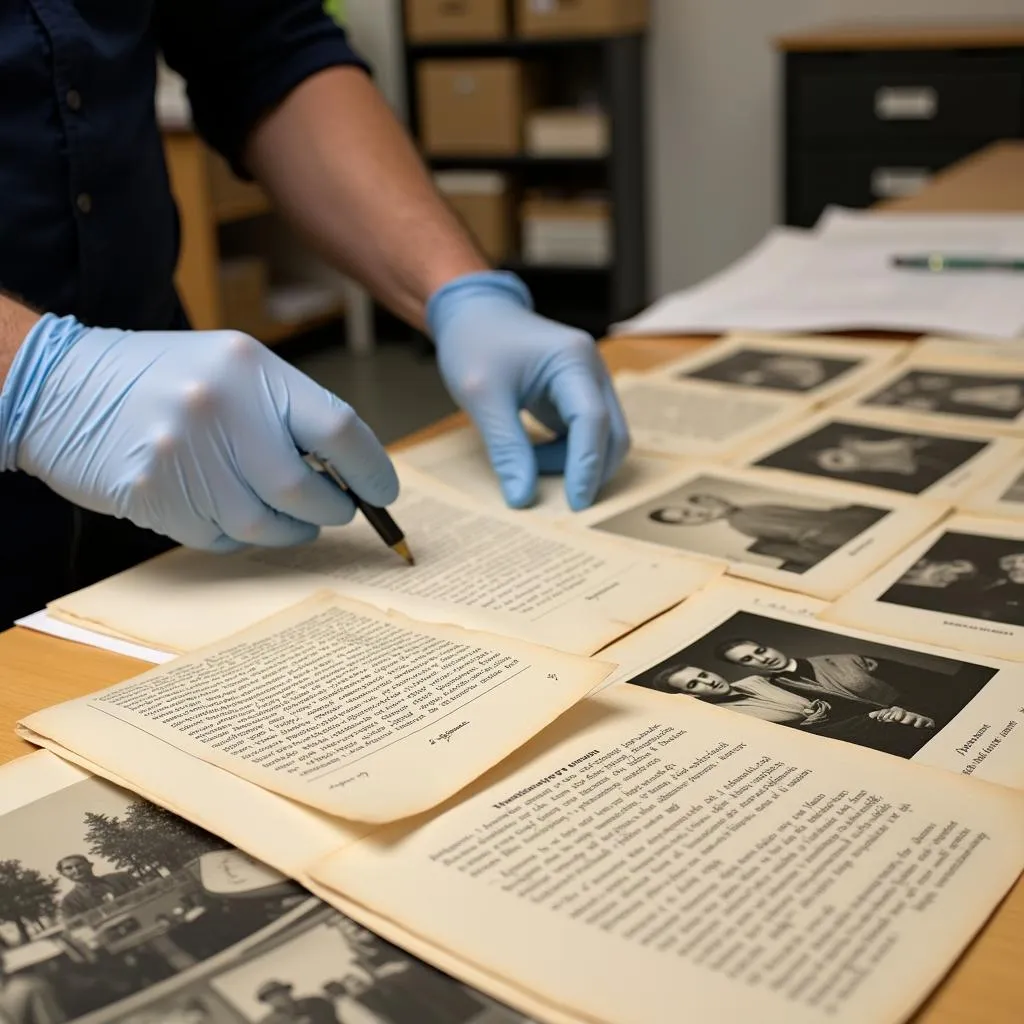Research that uses past records or data forms the cornerstone of many disciplines, allowing us to understand the present by examining the past. This approach, often referred to as archival research, historical research, or secondary data analysis, delves into existing information to uncover patterns, trends, and insights that might otherwise remain hidden.
Unlocking the Secrets of the Past: How Research Uses Past Records
Whether it’s dusty archives filled with handwritten letters or vast digital databases brimming with statistics, the past holds a wealth of information waiting to be unearthed. Researchers utilize a variety of sources depending on their objectives, including:
- Official Documents: Government records, court transcripts, and organizational reports offer valuable insights into historical events, social structures, and decision-making processes.
- Personal Accounts: Diaries, letters, and memoirs provide intimate glimpses into the lives of individuals, revealing their thoughts, emotions, and experiences.
- Multimedia Archives: Photographs, films, and audio recordings capture moments in time, offering visual and auditory perspectives on bygone eras.
- Research Data: Previously collected data from surveys, experiments, and studies serve as a rich resource for further analysis, often leading to new discoveries.
 Researcher Examining Old Documents
Researcher Examining Old Documents
Why Look Back? The Advantages of Using Past Records in Research
Investigating the past offers several unique advantages:
- Longitudinal Perspective: Historical data allows researchers to track changes and developments over extended periods, providing valuable context for understanding current events and predicting future trends.
- Non-reactive Measures: Since the data was collected in the past, there’s no risk of influencing participant behavior or responses, ensuring a higher degree of objectivity.
- Cost-Effectiveness: Analyzing existing data is often more economical than conducting large-scale, primary data collection.
Navigating the Challenges of Using Past Records in Research
While the benefits are numerous, researchers must also navigate certain challenges:
- Data Integrity: Ensuring the accuracy, completeness, and reliability of historical data can be a complex task, requiring careful authentication and verification.
- Bias Detection: Recognizing and accounting for potential biases in historical records is crucial for drawing valid conclusions.
- Ethical Considerations: Researchers must handle sensitive information responsibly, respecting privacy concerns and cultural sensitivities.
 Researcher Analyzing Data on Computer
Researcher Analyzing Data on Computer
From Archives to Insights: Applications of Research Using Past Records
The applications of research using past records are incredibly diverse, spanning various fields:
- History: Historians rely heavily on past records to reconstruct events, analyze societal changes, and understand the motivations of historical figures.
- Sociology: Sociologists use historical data to study social movements, demographic trends, and the evolution of cultural norms.
- Medicine: Medical researchers analyze past patient records and epidemiological data to identify disease patterns, evaluate treatment efficacy, and improve public health interventions.
The Future of Research: Past Records in the Digital Age
The digital revolution has dramatically transformed how we access and analyze information. The increasing availability of digitized archives, online databases, and sophisticated data analysis tools empowers researchers to delve deeper into the past than ever before.
 Digital Archives on Computer Screen
Digital Archives on Computer Screen
Conclusion
Research that uses past records or data provides a powerful lens through which we can examine the world around us. By carefully analyzing the echoes of the past, we gain a richer understanding of our present and future. As technology continues to evolve, the potential for uncovering hidden truths and extracting valuable insights from the past is limitless.